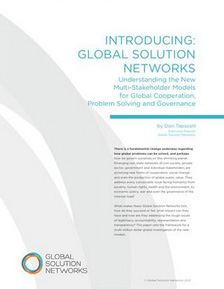Some schools have been disappointed with the seemingly small gains made by students when IT technology such as laptops have been introduced to the classroom. But as I have been writing for years, proper IT planning involved much more than simply throwing technology at the classroom wall and seeing what sticks. Teachers must know how to make best use of the new tools, and not simply digitize existing methodology. And how will they know what is the best use? Extensive stakeholder consultation, particularly of the students themselves.
A compilation of four new studies of one-to-one computing projects in K-12 schools has just been published by the Journal of Technology, Learning, and Assessment, a peer-reviewed online journal from Boston College’s Lynch School of Education. If you’re not inclined to read the studies themselves, a long but well-worth-reading discussion of the studies has just appeared in the online publication eSchool News.
In the words of eSchool, the studies identify several factors that are key to the projects’ success, including adequate planning, stakeholder buy-in, and strong school or district leadership. “Not surprisingly, the researchers say the most important factor of all is the teaching practices of instructors—suggesting school laptop programs are only as effective as the teachers who apply them.”
In a study of laptop programs in five public and private middle schools in western Massachusetts, access to 1-to-1 computing led to measurable changes in teacher practices, student engagement and achievement, and students’ research skills. Seventh graders in the second year of the program showed statistically significant gains on state test scores in English and language arts after controlling for prior achievement.
It’s “impossible to overstate the power of individual teachers in the success or failure of 1-to-1 computing,” said the study. “Teachers nearly always control how and when students access and use [the] technology during the school day. In addition, teachers must make massive investments in time and effort to adapt their teaching materials and practices to make the 1-to-1 environment effective and relevant.”
In the eSchool article, Torsten Otto, an educator from Germany said at his school, the 1-to-1 computing model is only as successful as the teachers’ 21st-century classroom practices. “In our 1-to-1 program … we put a big emphasis on project-based learning; otherwise, the laptop is no more than an expensive notepad. … Research needs to show the effects of this different style of teaching in terms of student engagement, motivation, and so-called 21st-century skills. The subject matters themselves don’t have as much room for improvement,” Otto said.
“We believe a ‘bottom-up’ approach is better than a ‘top-down,’” said Katie Morrow, technology integration specialist at O’Neill Public Schools in O’Neill, Neb.
Morrow made what I thought was the wisest observation of all: “Put the technology in kids’ hands as early as possible and let them drive the initiative forward. Students should be involved on planning committees, tech support teams, and any visioning or research teams. Publish student projects early on, bring in visitors to see the possibilities in action rather than just talk about them, use students to share at community meetings, board meetings, and in any way possible. Students will push and promote the laptop’s application in their various courses much more effectively than an administrator forcing it upon an unwilling teacher.”
Morrow said that when the benefits are apparent beyond the school building, stakeholders are willing to support education—and students realize it’s not just about the grade at the end of the unit.
“Collecting data is important, but more important is collecting stories,” she explained. “Compile anecdotal evidence and interview students. Publish projects that evolve out of the students’ opportunity to have 21st-century access 24/7—as opposed to purely test scores and teacher-driven assignments. This culture can cultivate in an initiative where the learning is the focus, rather than the instruction.”






Studies tend to take one to a certain place, but I prefer to look for places that people have not thought about studying (because one cannot study something unless it has emerged). The bottom up process fits a natural system of organic growth, but we have top-down systems in natural systems to, which form a closed loop – the weather is a good example of this “closed natural loop”.
I also am of the persuasion that the technology is only as good as the thinking that inspires its application and use. That if we were of a predisposition, manner or way, that technology is still technology – to humanize “technology” and say it does this to us, or that to us is to fall into the pit of legacy thinking.
I like what is written here because there is an attempt to escape these legacies. Here technology has a trait that can be correlated to human beings, in that technology is weighed down by legacy systems and human beings are weighed down by legacy thinking.
While I am not against “studies”, as a unit of one, as a blade of grass from the bottom up view, or a single rain drop from the top down view – I am willing to be a lab rat to my own explorations – explorations which via the osmosis of intelligence, turn technology into an extension of this absorbing relationship called “my learning”.
Bottom up approach then is the quality of the human being rather than the quality of grass. The only problem I associate with the words “bottom up” and “top down” is that it pertains to the system in play rather than the human being in development.
All said, what I have read here is at the leading edge of proactive transformation, so I welcome each atom of change and there are plenty of thinking configurations realizable here.
I like to think of this thinking as the new power of diversity and I welcome having had the opportunity to think about things here as a unit of one, (what Frank Sinatra cites as “My Way”). I am open minded enough to know that I do not know, in the same way that all of us do not know, and therefore am more than willing to find out at the level of personal exploration.
This is simply that expression which all of us will get more and more attuned with as each new decade appears – that we are in charge of our own learning, and in that regard this is bottom up – though learning is total (so that is why I am not going to prescribe the word “better” in terms of relationship or as comparison to top down).
[Em]